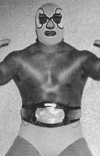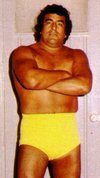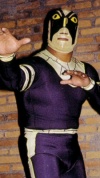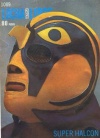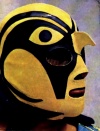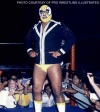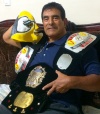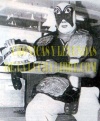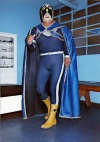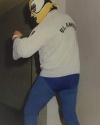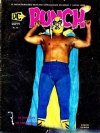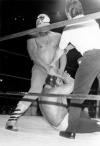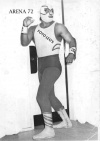El Halcón: Difference between revisions
No edit summary |
|||
| Line 13: | Line 13: | ||
|weight=231 lbs/105 kg | |weight=231 lbs/105 kg | ||
|signatureMoves=Dandina ([[La Magistral]]), [[Running Tope Suicida]], [[Flying elbowdrop]] | |signatureMoves=Dandina ([[La Magistral]]), [[Running Tope Suicida]], [[Flying elbowdrop]] | ||
|titles=[[Puebla Tag Team Championship]] (w/[[Tony Garcia]]), [[Arena Mexico Tag Team Titles]] (w/ [[El Solitario]]), [[National Heavyweight Title]] (5, three times as Halcón, once as Halcón Ortiz, once as Super Halcón), [[Northern Tag Team Titles]] (w/ [[Ciclón Veloz Jr.]]), [[NWA Americas Tag Team Titles]] (w/ [[Chavo Guerrero]]), World Class/Texas: NWA American Tag Team Titles (4, w/ [[Jose Lothario]] three times, w/ Kerry Von Erich), World Class: NWA American Heavyweight Title, [[WWA World Heavyweight Title]] (as Super Halcón), [[Mexican National Tag Team Championship]] (w/[[Falcón]]), [[ | |titles=[[Puebla Tag Team Championship]] (w/[[Tony Garcia]]), [[Arena Mexico Tag Team Titles]] (w/ [[El Solitario]]), [[National Heavyweight Title]] (5, three times as Halcón, once as Halcón Ortiz, once as Super Halcón), [[Northern Tag Team Titles]] (w/ [[Ciclón Veloz Jr.]]), [[NWA Americas Tag Team Titles]] (w/ [[Chavo Guerrero]]), World Class/Texas: NWA American Tag Team Titles (4, w/ [[Jose Lothario]] three times, w/ Kerry Von Erich), World Class: NWA American Heavyweight Title, [[WWA World Heavyweight Title]] (as Super Halcón), [[Mexican National Tag Team Championship]] (w/[[Falcón]]), [[MAWA World Heavyweight Championship]] | ||
|}} | |}} | ||
| Line 19: | Line 19: | ||
== Notes == | == Notes == | ||
He wanted to be a football player, he enrolled in the Instituto Politécnico Nacional, he found the offices closed and he passed by the gymnasium and saw people training Olympic Wrestling and he thought it was easy, but he trained with them and he was beaten. Later on he learned Cesar del Rio Gil was selected to participate in the Olympic Games of Tokyo 1964, since then he wanted to become a professional wrestler, but there was no one who train formally in that discipline. The spent time practicing Olympic and Greco-Roman wrestling where he began to outstand his inspiration were [[Black Shadow]], [[Rolando Vera]], [[Rene Guajardo]] and [[Apolo Curiel]]. He combined Lucha Libre with Olympic Wrestling. He was invited by his maestro [[Pedro Nieves]] to an event at [[Cancha de San Pedro]] in Puebla, Puebla. There was a wrestler missing for the first match, Pedro Nieves asked him if he could take that place and he accepted and made his debut. Three months later he was main eventer in that arena wrestling alongside [[Maravilla Moreliana]], [[Bobby Bonales]], Espectro and the best wrestlers of that time. The wrestler's name who missed that date was Orfeo Negro and he took that identity for four years. | He wanted to be a football player, he enrolled in the Instituto Politécnico Nacional, he found the offices closed and he passed by the gymnasium and saw people training Olympic Wrestling and he thought it was easy, but he trained with them and he was beaten. Later on he learned Cesar del Rio Gil was selected to participate in the Olympic Games of Tokyo 1964, since then he wanted to become a professional wrestler, but there was no one who train formally in that discipline. The spent time practicing Olympic and Greco-Roman wrestling where he began to outstand his inspiration were [[Black Shadow]], [[Rolando Vera]], [[Rene Guajardo]] and [[Apolo Curiel]]. He combined Lucha Libre with Olympic Wrestling. He was invited by his maestro [[Pedro Nieves]] to an event at [[Cancha de San Pedro]] in Puebla, Puebla. There was a wrestler missing for the first match, Pedro Nieves asked him if he could take that place and he accepted and made his debut. Three months later he was main eventer in that arena wrestling alongside [[Maravilla Moreliana]], [[Bobby Bonales]], Espectro and the best wrestlers of that time. The wrestler's name who missed that date was Orfeo Negro and he took that identity for four years. As Orfeo Negro he won the [[Puebla Tag Team Championship]] with [[Tony Garcia]] against Los Hermanos Buitre. | ||
His debut as Danny Ortiz was on [[December 8]], 1971 in a tag tournament with [[Tino Herrera]]. He wrestled under that name for about a year with his ups and downs. There was a contest at El Halcon Magazine, to find a new luchador and they required a wrestler to be the image of the magazine. He was selected among the 12 candidates, he made his debut as Halcon was on 1973. He became a big draw and received championship opportunites. There were conflicts between wrestling magazines with the name of El Halcon, nevertheless this did not damage him. He was still a draw and accepted by the crowd. After his mask loss on 1977 he turned into a rudo. He kept winning Championships and received many opportunities. He had epic matches against [[Psicodelico]], [[Dos Caras]], [[Espanto II]], [[Black Man]], and more. | Sometime later he was training at Arena Mexico, and he wanted to be a professional wrestler formally, in order to do so he was helped by [[Ray Mendoza]]. Went under different identities, such as Bengala, then he assumed another identity. [[Atila]] gave him a mask which he modified to assume the gimmick of Argos, he used that name for a season in Cancha de San Pedro and other places. He met Angel Negro ([[Karloff Lagarde]]'s brother) and [[El Pulpo]] helped him in is early career. Practiced both disciplines Lucha Libre and Olympic Wrestling at the same time. He was national champion in Greco Roman wrestling and representing Mexico in Panamerican Games. He took the decision to become professional, and was supported by Ray Mendoza. He continued his training with [[Rafael Salamanca]] and prior his debut he recommended a name there was a Danny Hass and Salamanca thought in the name of Danny Ortiz for his trainee. | ||
His debut as Danny Ortiz was on [[December 8]], 1971 in a tag tournament with [[Tino Herrera]]. He wrestled under that name for about a year with his ups and downs. There was a contest at El Halcon Magazine, to find a new luchador and they required a wrestler to be the image of the magazine. He was selected among the 12 candidates, he made his debut as Halcon was on 1973. He became a big draw and received championship opportunites. There were conflicts between wrestling magazines with the name of El Halcon, nevertheless this did not damage him. He was still a draw and accepted by the crowd. After his mask loss on 1977 he turned into a rudo. He kept winning Championships and received many opportunities. He had epic matches against [[Psicodelico]], [[Dos Caras]], [[Espanto II]], [[Black Man]], and more. Wrestled against Harley Race many times for the [[NWA World Heavyweight Championship]] in Mexico and all over Texas and always tied. Harlye Race himself stated that the best luchadors of Mexico were [[Alfonso Dantes]] and Halcon. He made tours in the United States and Japan. Even when he remasked as Super Halcon, he was supported by the people. His retirement match was on 1989 in the lucha de apuestas against [[Rayo de Jalisco Jr.]] He made special appearances his last match was on 2000 in the event of "Las Cuatro Decadas", there was another in Arena Naucalpan and the last was in [[El Audaz]]'s retirement event. | |||
== Luchas de apuestas record == | == Luchas de apuestas record == | ||
Revision as of 16:28, 26 June 2018
Profile
| El Halcón (The Hawk) | |||||||||||||||||||||||||||||
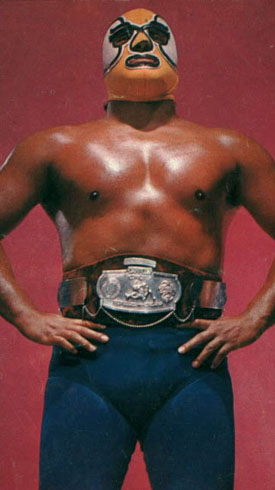 |
|
||||||||||||||||||||||||||||
Notes
He wanted to be a football player, he enrolled in the Instituto Politécnico Nacional, he found the offices closed and he passed by the gymnasium and saw people training Olympic Wrestling and he thought it was easy, but he trained with them and he was beaten. Later on he learned Cesar del Rio Gil was selected to participate in the Olympic Games of Tokyo 1964, since then he wanted to become a professional wrestler, but there was no one who train formally in that discipline. The spent time practicing Olympic and Greco-Roman wrestling where he began to outstand his inspiration were Black Shadow, Rolando Vera, Rene Guajardo and Apolo Curiel. He combined Lucha Libre with Olympic Wrestling. He was invited by his maestro Pedro Nieves to an event at Cancha de San Pedro in Puebla, Puebla. There was a wrestler missing for the first match, Pedro Nieves asked him if he could take that place and he accepted and made his debut. Three months later he was main eventer in that arena wrestling alongside Maravilla Moreliana, Bobby Bonales, Espectro and the best wrestlers of that time. The wrestler's name who missed that date was Orfeo Negro and he took that identity for four years. As Orfeo Negro he won the Puebla Tag Team Championship with Tony Garcia against Los Hermanos Buitre.
Sometime later he was training at Arena Mexico, and he wanted to be a professional wrestler formally, in order to do so he was helped by Ray Mendoza. Went under different identities, such as Bengala, then he assumed another identity. Atila gave him a mask which he modified to assume the gimmick of Argos, he used that name for a season in Cancha de San Pedro and other places. He met Angel Negro (Karloff Lagarde's brother) and El Pulpo helped him in is early career. Practiced both disciplines Lucha Libre and Olympic Wrestling at the same time. He was national champion in Greco Roman wrestling and representing Mexico in Panamerican Games. He took the decision to become professional, and was supported by Ray Mendoza. He continued his training with Rafael Salamanca and prior his debut he recommended a name there was a Danny Hass and Salamanca thought in the name of Danny Ortiz for his trainee.
His debut as Danny Ortiz was on December 8, 1971 in a tag tournament with Tino Herrera. He wrestled under that name for about a year with his ups and downs. There was a contest at El Halcon Magazine, to find a new luchador and they required a wrestler to be the image of the magazine. He was selected among the 12 candidates, he made his debut as Halcon was on 1973. He became a big draw and received championship opportunites. There were conflicts between wrestling magazines with the name of El Halcon, nevertheless this did not damage him. He was still a draw and accepted by the crowd. After his mask loss on 1977 he turned into a rudo. He kept winning Championships and received many opportunities. He had epic matches against Psicodelico, Dos Caras, Espanto II, Black Man, and more. Wrestled against Harley Race many times for the NWA World Heavyweight Championship in Mexico and all over Texas and always tied. Harlye Race himself stated that the best luchadors of Mexico were Alfonso Dantes and Halcon. He made tours in the United States and Japan. Even when he remasked as Super Halcon, he was supported by the people. His retirement match was on 1989 in the lucha de apuestas against Rayo de Jalisco Jr. He made special appearances his last match was on 2000 in the event of "Las Cuatro Decadas", there was another in Arena Naucalpan and the last was in El Audaz's retirement event.
Luchas de apuestas record
Gallery
 vs Hiro Matsuda |
 winning Los Gemelos Diablos' masks |
 with Lizmark |
